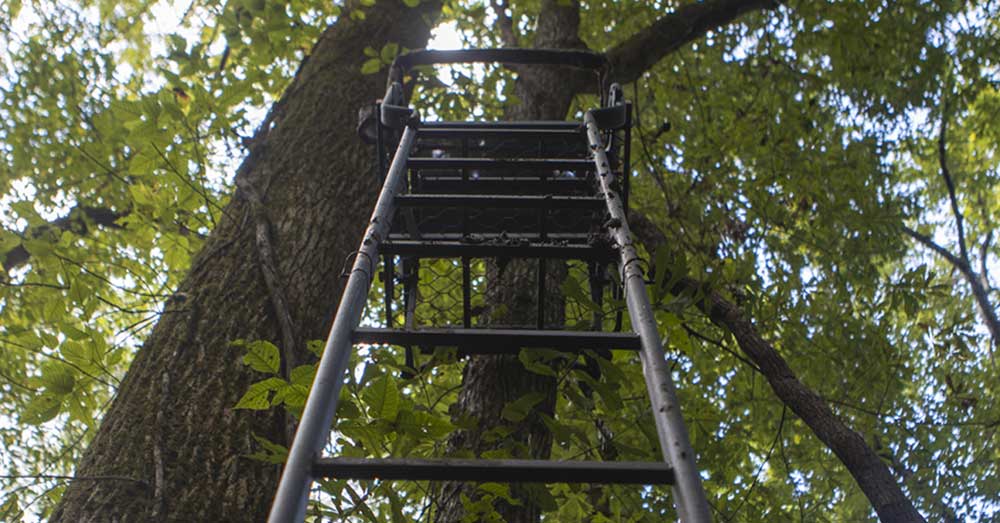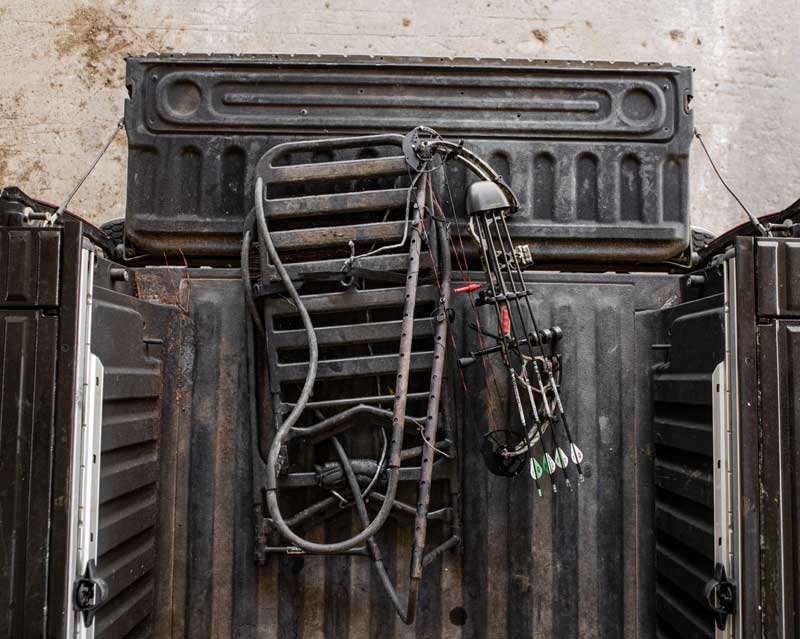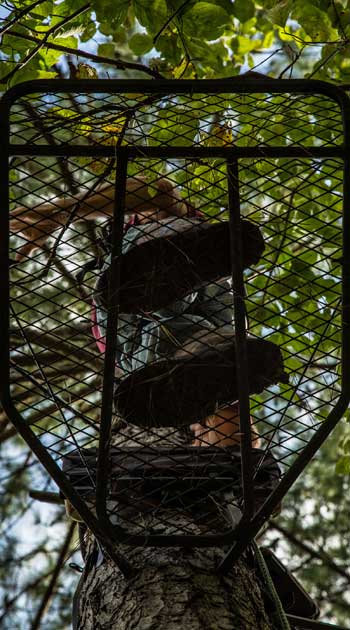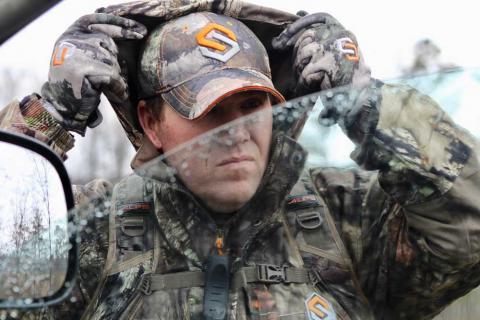Travis Ahlberg

No matter how long you’ve been hunting a property, the excitement that comes from preparing for hunting season is one that we all understand. We spend countless hours studying the land, figuring out where to put in food plots and deciding where to hang the tree stands to give us the best chance to harvest an animal. With all the excitement and preparation common sense tree stand safety is often overlooked. It doesn’t matter if you have been hunting out of the same stand for over a decade, or you just purchased the latest model, there are a few things that need your attention in order to ensure that you return home after the hunt.
Some of this might seem like common sense, but when it comes right down to it, a lot of people don’t think before they act and that’s when accidents happen. A few reports state that 75 to 86% of tree stand accidents occur while the hunter is “climbing up” into the stand or “coming down.” Why is this? Because we don’t take the precautions necessary to stay safe. Here are some tips and tricks to follow when heading out to get your set up and running, all the way through the final day of the season:
Tree Stand Safety Equipment
ALWAYS wear your harness and use the appropriate safety gear. Any tree stand that is produced by a member of the TMA (Treestand Manufacturer’s Association) will have a harness in the box. Use this harness if you don’t have one; but better yet, buy one of the great aftermarket harnesses that meet the industry’s standards recognized by the TMA. Make sure to get one that fits your body size and adjust it properly before you head into the woods. If you are using a hang-on or climber stand, a linesman style belt is a safety tool that you shouldn’t leave the ground without. When going up a ladder stand, use a life line style rope system and stay connected from the ground to further enhance your safety. Take some time and do a little research on what system is best suited for you and the stand you are hunting out of.
Read The Manual
Yes, actually read the manual. Most of us just start putting things together and maybe we have a part or 10 leftover when we are done. Sometimes you may even have to take things apart to swap parts around. Tree-stand manufacturers know what they are doing and have put together extensive manuals to make sure that we have no issues putting stands together the proper way so they function as intended. Keeping us safe when we are off the ground is what they strive to do, so please follow the directions.

Tree Selection
If a tree isn’t healthy, fairly straight, or just right for hanging your tree stand from, choose a different location. It doesn’t matter how perfect the spot is if you have an accident or don’t make it home at the end of the hunt. Having an unsafe stand placement isn’t worth the risk. Check the tree for decay, dying branches and solidity of the core. If you aren’t sure, play it safe and find another tree.
Tree Stand Inspection
Whether your stand has been in the woods for years, or you’re hanging a brand new set, it’s important to inspect the stand as thoroughly as possible. Your checklist should include tightness of nuts and bolts, weathering of straps, rusting of chains or metal parts, and anything that is loose or just doesn’t seem right. Checking your stand before you climb is especially important if it has been left out in the woods for any period of time. Trees grow, the sun and weather make things deteriorate and climbing into a stand that has been out in the elements for a prolonged period of time has the opportunity to be unsafe.
Maintain 3 Points of Contact
When climbing, it is important to keep the “3 points of contact” rule in place. Considering again that the majority of tree stand accidents occur when climbing up or down this is obviously a place where you should focus. Whether it is 2 hands and 1 foot or 2 feet and 1 hand, having 3 points of contact with the ladder or climbing stick will increase your opportunity to climb up safely and get down the same. Combine this method with use of a lifeline style system or linesman belt system, and you can increase your odds of getting into your stand safely and making it home at the end of the day.
Getting Gear Into Your Tree Stand
Whether you are gun or bow hunting, sitting for a few hours or all day, you’re going to have items to get up into your stand. DO NOT carry the items up the ladder with you. Use a haul line to hoist your items safely up to the platform. When raising a gun, make sure it is unloaded and that the muzzle is pointing towards the ground. If you’re bow hunting, ensure that all of the broadheads are covered. Utilize the haul line to lower the items at the end of the hunt as well.
Be Careful

Be especially careful during installation and the take down of any tree stand. This is when most accidents occur as not all safety features are in use at the same time. Using the buddy system for tree stand installation is the safest way to go.
Let others know where you will be and what time you plan on being out of the woods. Cell phones are great, but service isn’t the greatest everywhere, so have a back-up plan in case something does go wrong and people need to go look for you.
Whether you define success by harvesting a majestic animal or simply because you got to spend time in the good Lord’s creation, paying attention to details and following these “simple” guidelines can help you have a safe trip. If you feel that this is too much to think about or do, then maybe hunting out of a ground blind is a better option for you.































